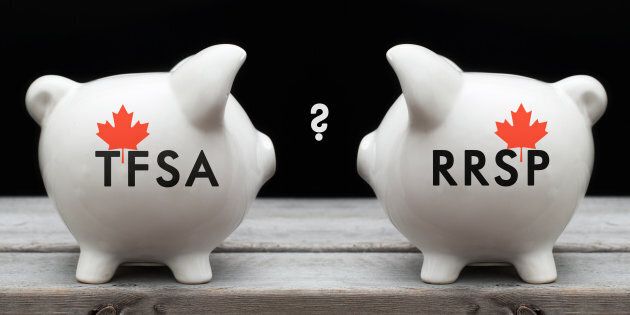
COMPARING TFSA AND RRSP
The literature on this topic abounds and yet, there still seems to be much confusion in the Canadian consumer/investor’s mind. The real difference between the RRSP and TFSA comes down to their contribution limits and withdrawal restrictions as well as how and when you pay taxes following these events.
TFSA basics
The TFSA was introduced in 2009 to give Canadians a more flexible savings tool. Like the RRSP, the TFSA is best used for retirement savings.
- It is a very flexible, all-purpose (although we recommend it as a cool investing tool to build a tax efficient retirement egg nest) that allows you to contribute and withdraw from a tax-sheltered account easily and without a tax penalty (fees may apply, depending on how you are invested)
- As a Canadian resident, you can open a TFSA as soon as you turn 18, and there is no age limit.
- You can make tax-free withdrawals from your TFSA anytime, for any purpose. You can only replace the amount of the withdrawal in the same year, if you have available TFSA contribution room (unless you want to pay a penalty). The contribution room is returned as of January 1st of the following year.
- When you retire and start pulling money out of your RRSP and TFSA accounts, the CRA will consider the amount of your RRSP withdrawals as earned income and that may affect your access to government benefits such as, but not limited to, the Old Age Security (OAS) payments. But this is not the case when withdrawing from TFSA — a big bonus.
- Some employers offer pension-matching contributions only for RRSP contributions. When that is the case, take advantage of that free money benefit and go with that group RRSP.
- Make sure you name your spouse or common-law partner as “Successor Owner” of your TFSA. Should anything happen to you, this will allow for an easy “rollover”of the TFSA funds to him or her, without affecting his or her own contribution room or having to cash-in and close that account
RRSP Basics
The RRSP was introduced in 1957 to encourage Canadians to save for retirement.
- Since contributions are done with pre-tax income, you can claim a tax deduction in the year you make a contribution. It is important to remember that the tax refund CRA sends you is not a bonus destined to finance your next project or vacation. It is a refund of the taxes paid on that portion of your earned income. If you don’t re-invest your tax refund, then you lose out on the pre-tax advantages. Turbo-charge your RRSP by re-investing your tax refund, provided you have that contribution room.
- Unlike a TFSA, you will have to pay tax when you make a withdrawal. RRSP must be converted to a Registered Retirement Income Fund (RRIF) or a registered annuity by December 31st of the year you turn 71 and you will start drawing at least the minimum required income the following year.
- The maximum RRSP contribution is 18% of your gross income or $27,230 for 2020, whichever is lower. Any unused contribution room can be carried forward to the next year.
- There are two exceptions that allow you to withdraw from your RRSP for purposes other than retirement and keep deferring taxes. However, you will need to repay the amount:
- Home Buyers Plan (withdraw up to $35,000 for a down-payment on your first home, and repay over 15 years)
- Lifelong Learning Plan ($10,000 per year to a maximum $20,000 for school, and repay over 10 years)
In Conclusion: choosing between the TFSA versus the RRSP doesn’t have to be complicated
Both the TFSA and RRSP are investment vehicles that shelter taxes on your investment returns, but depending on your circumstances, one might better for your money than the other. The TFSA is more flexible and may offer a better long term tax benefit than the RRSP but doesn’t have as high a contribution room. The RRSP will probably let you set aside more but has stricter rules around when you can withdraw your money, and what for. Ultimately, everyone should aim to have both an RRSP and a TFSA and spread out the savings across both accounts.
Regardless of whether you choose the RRSP, the TFSA or a combination of both, one of the best things you can do is invest consistently. Use a pre-authorized contribution plan to “pay yourself first.” Over time, once that saving routine has become a habit, it won’t seem to impact your cash-flow as you have adapted to living without that money, you can gradually increase your contributions until you max out both accounts.
